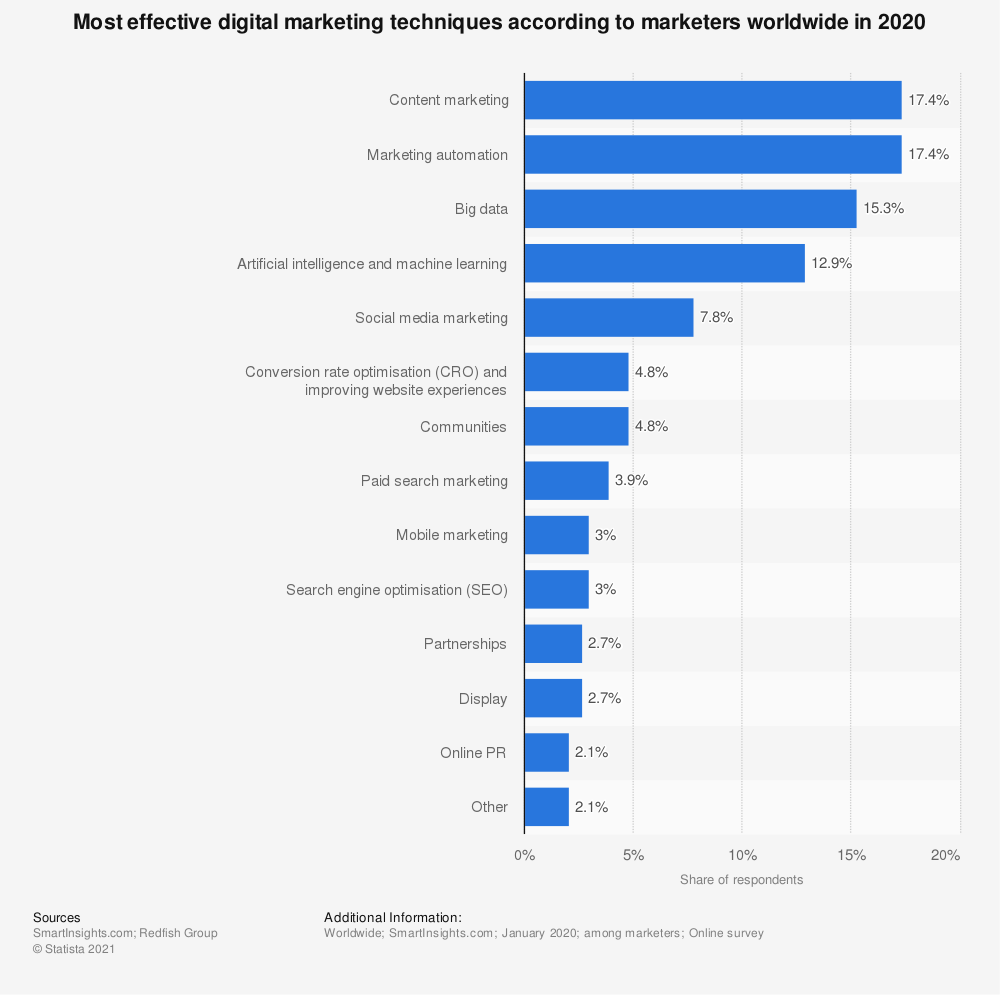With a strong digital marketing strategy, you can grow your reach, bring in more sales, and scale your business.
From running Instagram ads to starting a blog — or entering the Metaverse — there is so much you can do in the realm of digital marketing. But you don’t want to dive in without a plan. Otherwise you may find yourself with a wasted budget and broken dreams.
We’re here to help save you from that fate. Read on for the four essential steps you need to take when developing a strong digital marketing strategy for your business.
Sections
1. Do your research.
Before you can develop your own digital marketing strategy, you want to get the lay of the land. That’s where this step comes in. Even if you’ve already been in business for some time, it’s worth reviewing your competitors and the market to get a sense of what marketing looks like in your space. Consider the following:
- What marketing channels are your competitors using? This can give you insights into where your audience expects to see you, or if there’s a gap on an underutilized network.
- What’s working well, and what isn’t? Take notes of particularly successful campaigns or posts, and imagine how you can do them better.
- Get granular. How often are your competitors posting on various channels, and what types of content do they use? Are they posting videos, images, memes? How do customers respond?
2. Know your audience.
Next, you’ll want to get a good understanding of your audience. Review your Facebook Audience Insights, Instagram Account Insights, Google Analytics, and current customer lists for free demographic insights into the people already following your business.
You’ll also want to define your user personas. Think of user personas as stand-ins for your ideal customers. For example, a yoga gear brand may have a few personas:
- The Yoga Mom: A woman in her 30s to 40s with a high-powered job who goes to yoga a few times a week and grabs coffee after class with friends.
- The Yoga Athlete: A man aged 25 to 34 who uses yoga to augment their other training. They lift weights and drink protein shakes. He makes $5,000 per month.
- The Free Spirit: This 20-something woman lives and breathes yoga, attending class on a daily basis. She works odd jobs and has a jewelry-making side hustle.
Each of these personas has unique needs, motivations, and pain points that you can speak to with your marketing messaging. The Yoga Mom may respond to messaging that emphasizes how the gear transitions well from the office to the studio, while the Free Spirit may respond to messaging around the affordability of the gear and how it supports a deeper practice.
Different personas may use certain marketing channels more or less than others. For example, men are more likely to use Reddit, while women are more likely to use Pinterest. With defined personas, you can be strategic with how you use different platforms, messaging, and targeting for your marketing campaigns.
3. Define your goals and KPIs.
What do you hope your digital marketing strategy helps you achieve? Whether it’s more awareness or more sales, whatever popped into your head when you read that question is your goal.
Goals are nice, but they can be vague. For each goal, set measurable KPIs (key performance indicators) that will motivate you to stay on track and strive to reach them. For example, if your goal is more sales, set a KPI for the number of sales you hope to achieve per month per channel.
- Average new follower count per month
- Average engagement rate per post
- Average conversion rate per campaign or channel
- Average monthly traffic numbers per channel
4. Create a sustainable plan for each channel.
Finally, it’s time to decide on the channels you’ll use to achieve your goals. Here are some of the most effective digital marketing techniques, according to Statista:

You don’t have to use all of these channels, especially when starting out. You can focus on a few, create a solid plan for each, and expand your marketing later.
Based on your research in step one, let’s say you’ve decided that starting a blog, amplifying your Instagram presence, and using Google advertising will be effective for your type of business or product.
For each of those channels, you can decide on specific tactics you’ll use. For example:
- Blog: You’re going to post two times per month. These posts will boost your SEO and help you reach your monthly traffic KPIs.
- Instagram: You’ll post an image or Story daily. You’ll also set up your Instagram shop and use Instagram advertising to reach your monthly sales goals.
- Google Advertising: You’ll use a mix of Google Shopping ads and retargeting display ads to bring customers to your website, with the goal of increasing your monthly sales.
Get to work
Developing a digital marketing strategy takes work, but it’s definitely worth it. As you start putting your plan to action, set time aside to analyze, adjust, and pivot if necessary.
And if you need help, contact Your Marketing People. Our digital marketing experts specialize in crafting strategies that target each stage of the funnel, with the goal of getting you more awareness, more engagement, and more conversions — consistently.







